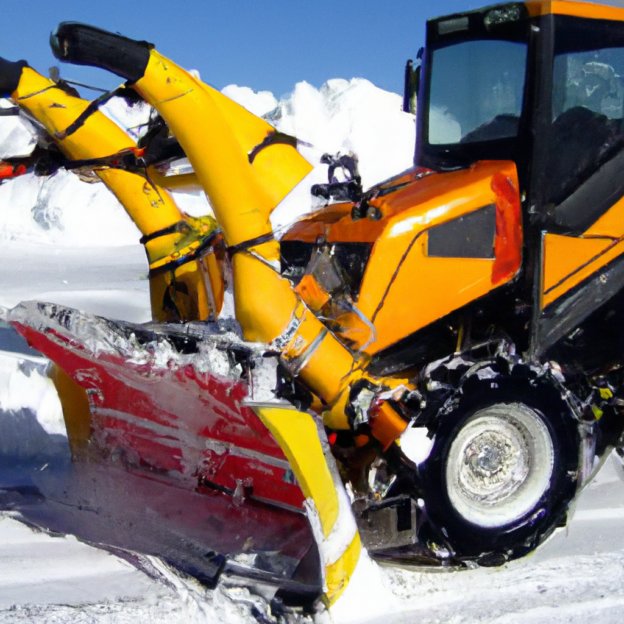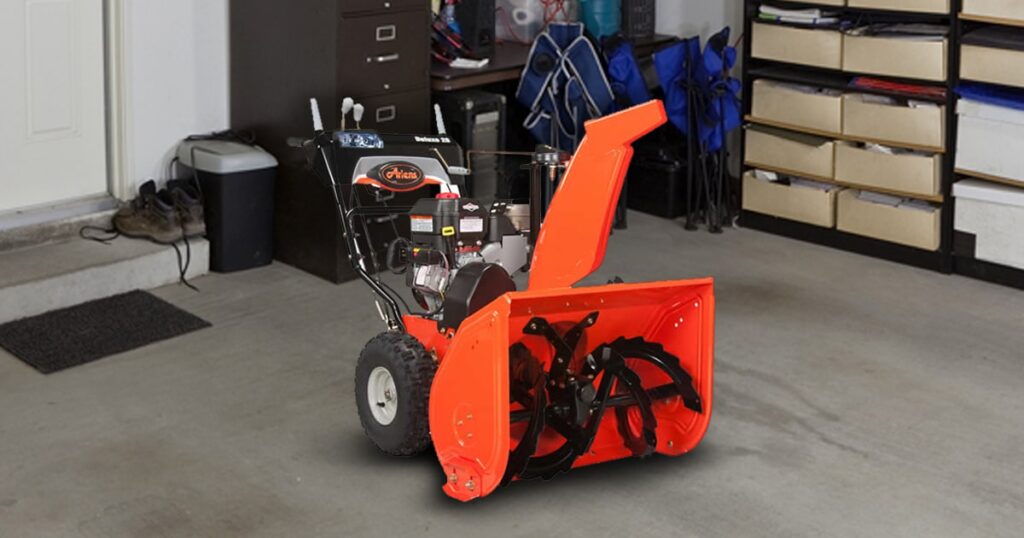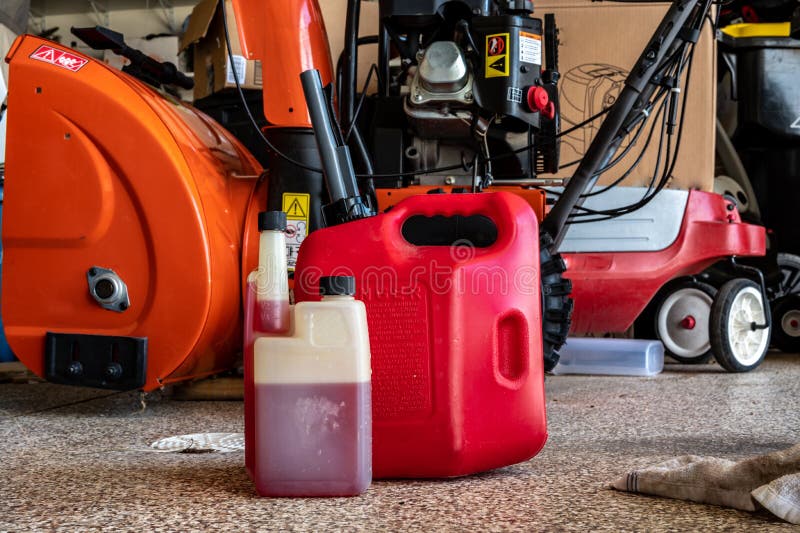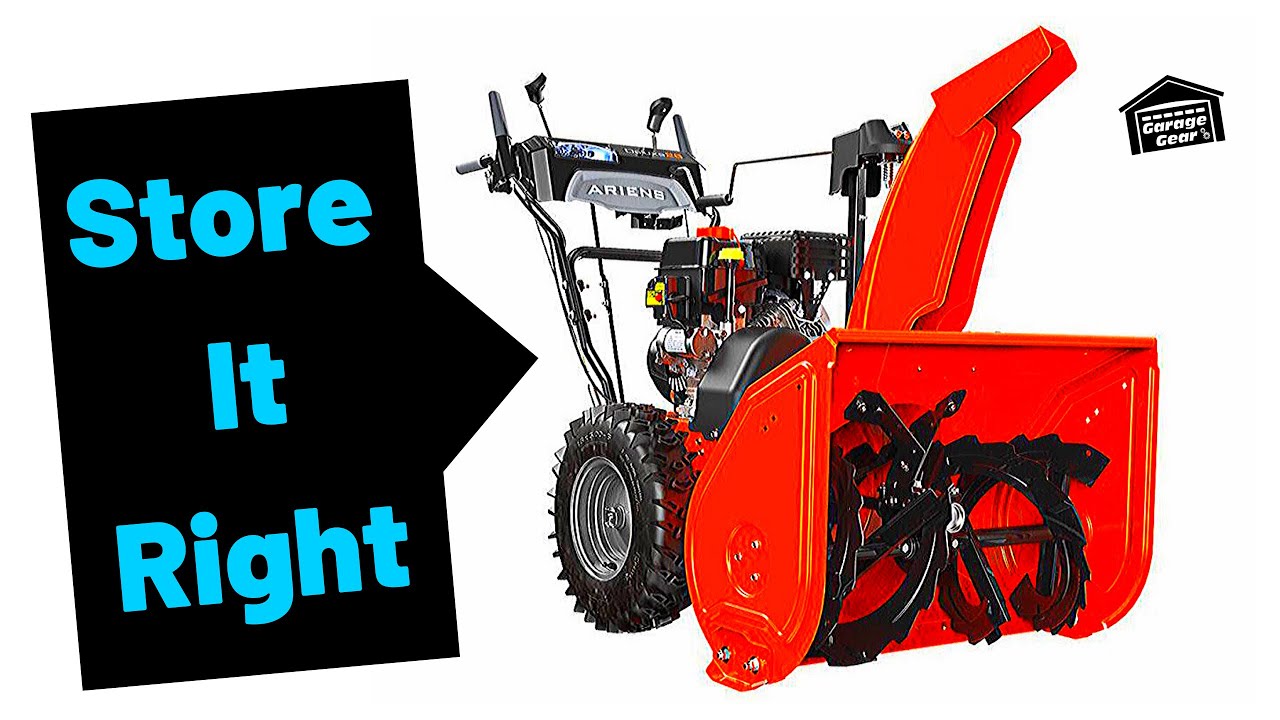So you’ve got a snowblower that’s been sitting in your garage all summer, and now winter is approaching and it’s time to get it up and running again. But before you can start tackling those snow-covered driveways and sidewalks, you realize that the fuel in your snowblower is old and needs to be drained. But how do you go about doing that? In this article, we’ll guide you through the process of draining old fuel from your snowblower, ensuring that it’s ready to take on the winter season.

Preparing for Fuel Drainage
Gather the necessary tools and materials
Before you begin draining the old fuel from your snowblower, it’s important to gather all the necessary tools and materials. These may include a wrench or socket set, a clean container for fuel, gloves, safety goggles, and a fuel stabilizer (optional). Having everything you need readily available will make the process smoother and more efficient.
Choose an appropriate location
Next, you need to select an appropriate location for the fuel drainage process. Ideally, you should choose a well-ventilated area outdoors to prevent the buildup of potentially harmful fumes. It’s also important to ensure that you have enough space to work comfortably and that the surface is stable and level.
Ensure safety precautions
Before you begin working on your snowblower, it’s crucial to prioritize safety. Make sure the snowblower is turned off and the engine is cool to avoid any burns or accidents. Wear protective gloves and safety goggles to protect your hands and eyes. Additionally, be cautious of any nearby open flames, sparks, or smoking materials, as fuel can be highly flammable.
Identifying the Fuel System
Identify the fuel tank
To begin the fuel drainage process, you first need to locate the fuel tank on your snowblower. Depending on the make and model, the fuel tank may be located either on top of the engine or underneath the snowblower’s body. Consult your snowblower’s manual for the exact location if you’re unsure.
Locate the fuel shut-off valve
Once you’ve identified the fuel tank, you’ll then need to locate the fuel shut-off valve. This valve is typically attached to the fuel line coming from the tank and can be turned to either open or close the fuel flow. By turning off the fuel shut-off valve, you’ll prevent any additional fuel from flowing into the engine during the drainage process.
Check for a fuel filter
In some snowblower models, there may also be a fuel filter installed in the fuel line. The fuel filter helps capture any debris or impurities before the fuel enters the engine. If your snowblower is equipped with a fuel filter, make sure to check its condition and clean or replace it if necessary.
Emptying the Fuel Tank
Turn off the snowblower
Before you can begin emptying the fuel tank, it’s essential to turn off the snowblower and allow the engine to cool. This ensures your safety and prevents any potential accidents during the fuel drainage process.
Locate the fuel line
Once the snowblower is turned off, you can proceed to locate the fuel line connected to the fuel tank. The fuel line is typically a rubber tube that carries fuel from the tank to the engine. It’s important to identify and familiarize yourself with the fuel line to ensure a smooth and efficient drainage process.
Prepare a clean container
To contain the drained fuel, prepare a clean container that is suitable for holding gasoline. Ensure that the container is free from any residues or impurities that could contaminate the fuel. This will help you prevent any potential damage to the snowblower’s engine and make the disposal of the old fuel easier.
Disconnect the fuel line
With the container ready, carefully disconnect the fuel line from the snowblower. To do this, you may need to use a wrench or socket set to loosen any clamps securing the fuel line to the engine. Take your time to ensure that the line is disconnected properly without causing any damage to the snowblower or the fuel line itself.
Drain the fuel into the container
Once the fuel line is disconnected, gently lower it into the clean container to start the fuel drainage process. Allow the fuel to flow freely from the tank into the container, fully emptying the fuel tank. Be patient during this step, as it may take some time for all the fuel to be drained.

Draining the Carburetor
Locate the carburetor
After emptying the fuel tank, the next step is to locate the carburetor on your snowblower. The carburetor is responsible for mixing air and fuel to create a combustible mixture that powers the engine. It’s usually located near the engine and connected to the fuel line.
Identify the carburetor drain bolt
To drain the fuel from the carburetor, you’ll need to locate the carburetor drain bolt. This bolt is typically located at the bottom of the carburetor and is designed to allow fuel to be released. It’s important to identify the drain bolt to ensure you’re directing the fuel properly during the drainage process.
Place a container beneath the carburetor
To prevent any fuel from spilling onto the ground, place a container beneath the carburetor before attempting to open the drain bolt. This will catch the fuel as it drains out, ensuring a clean and controlled process. Double-check that the container is stable and properly positioned before proceeding.
Loosen the drain bolt to release fuel
Using the appropriate wrench or socket, carefully loosen the carburetor drain bolt. As you do so, fuel from the carburetor will start to flow out into the container. Allow all the fuel to drain completely before moving on to the next step. Take caution not to overtighten or damage the drain bolt during this process.
Removing Old Fuel Completely
Inspect the fuel tank and carburetor
With the fuel tank and carburetor now drained, it’s time to inspect them for any residue or debris. Look closely for any signs of old fuel or sediment that may have settled at the bottom of the tank or carburetor. If you notice any buildup, it’s crucial to remove it before proceeding.
Clean any residue or debris
To clean the fuel tank and carburetor, use a clean cloth or rag to wipe away any residue or debris. If necessary, you can also use a small brush or compressed air to remove stubborn particles. Ensure that both the tank and carburetor are completely clean before moving forward.
Flush the fuel tank with fresh fuel
To eliminate any remaining traces of old fuel, flush the fuel tank with fresh fuel. Pour a small amount of fresh gasoline into the tank and swish it around, allowing it to wash away any residual deposits. Carefully tilt and pour out the fresh fuel into the appropriate container. Repeat this process if needed until the fuel tank is thoroughly cleaned.
Clean the fuel filter (if applicable)
If your snowblower is equipped with a fuel filter, this is a good time to inspect and clean it. Remove the filter, following the instructions in your snowblower’s manual, and rinse it under clean water. Gently tap the filter to dislodge any trapped debris and allow it to dry fully before reinstalling.
Replacing Fuel System Components
Reconnect the fuel line
Now that the fuel tank and carburetor are clean, it’s time to reconnect the fuel line. Carefully attach the fuel line to the appropriate connections on the snowblower, ensuring a secure fit. Use any clamps or fasteners that were previously in place to secure the fuel line properly.
Replace any damaged fuel lines or clamps
While reconnecting the fuel line, take a moment to inspect it for any damage or wear. If you notice any cracks, leaks, or deterioration, it’s crucial to replace the affected sections of the fuel line. Additionally, replace any damaged or worn-out clamps or fasteners to ensure a tight and secure connection.
Reinstall the fuel filter (if applicable)
If you removed the fuel filter during the cleaning process, now is the time to reinstall it. Follow the instructions in your snowblower’s manual to ensure you properly position and secure the filter. Double-check that the fuel filter is correctly aligned with the fuel line connections.
Refilling with Fresh Fuel
Choose the appropriate fuel type
Before refilling your snowblower’s fuel tank, always use the appropriate fuel type recommended by the manufacturer. Consult your snowblower’s manual or check the fuel cap for the correct fuel specifications. Using the wrong fuel can result in poor performance and potential damage to the engine.
Fill the fuel tank with fresh fuel
Using a clean and approved gasoline container, fill the snowblower’s fuel tank with fresh fuel. Take care not to spill any fuel during this process and avoid overfilling the tank. Place the fuel cap back securely once the tank is adequately filled.
Add a fuel stabilizer (optional)
To help preserve the freshness and quality of your snowblower’s fuel, you may choose to add a fuel stabilizer. Fuel stabilizers work by preventing the breakdown of gasoline over time, especially during extended periods of storage. Follow the instructions on the fuel stabilizer’s packaging to add the appropriate amount to the fuel tank.
Performing Maintenance Checks
Inspect spark plugs
After completing the fuel drainage and refilling process, it’s an excellent opportunity to inspect and possibly clean or replace the spark plugs. Remove the spark plugs using a spark plug wrench and check for signs of wear, corrosion, or fouling. If necessary, clean the spark plugs or replace them with new ones for optimal performance.
Check oil levels
In addition to the spark plugs, checking the oil levels in your snowblower’s engine is equally important. Refer to your snowblower’s manual for the correct method of checking oil levels and the recommended oil type. Adjust the oil levels if needed and change the oil as per the manufacturer’s instructions, if necessary.
Clean or replace air filters
The air filters in your snowblower play a crucial role in preventing dust and debris from entering the engine. If the air filters appear dirty or clogged, remove them and clean them thoroughly. Alternatively, replace them with new filters if they are in poor condition. Clean air filters ensure proper engine performance and prolong the life of your snowblower.
Test Starting the Snowblower
Prime the engine (if required)
Depending on your snowblower model, you may need to prime the engine before starting. Consult your snowblower’s manual for the correct priming instructions and follow them accordingly. Priming prepares the engine for starting and ensures smooth operation.
Choke the engine
After priming, if necessary, locate the choke on your snowblower and engage it to start the engine. The choke restricts airflow to the engine, making it easier to start in colder temperatures. Once the engine starts running smoothly, gradually disengage the choke to allow for normal airflow.
Start the snowblower
With the engine primed and the choke engaged, pull the starter cord or press the electric start button to start the snowblower. Listen for the engine to start smoothly and idle consistently. If there are any issues or the engine fails to start, refer to your snowblower’s manual for troubleshooting tips.
Observe for smooth operation
As the snowblower starts and idles, observe its operation for any abnormal sounds, vibrations, or performance issues. Pay attention to how the engine responds when engaging the augers or impellers. Smooth operation indicates that your snowblower is ready for use.
Tips and Precautions
Avoid old fuel accumulation
To prevent fuel-related issues, it’s important to avoid the accumulation of old fuel in your snowblower. Whenever the snowblower will be idle for an extended period, consider draining the fuel tank and running the engine until it stalls to remove any remaining fuel. This helps prevent fuel deposits, clogging, and starting problems in the future.
Dispose of old fuel properly
When disposing of old fuel, it’s crucial to follow proper disposal methods to protect the environment and comply with local regulations. Contact your local waste management facility or designated collection centers for information on how to safely dispose of old fuel. Never dispose of fuel down drains or onto the ground as it can contaminate soil and water sources.
Regularly maintain the fuel system
Regular maintenance of your snowblower’s fuel system is essential for optimal performance and longevity. Follow the manufacturer’s recommended maintenance schedule, which often includes fuel system checks, filter replacements, and fuel stabilizer use during storage. By staying proactive with maintenance, you’ll ensure that your snowblower is always ready when you need it.
In conclusion, draining old fuel from your snowblower is an important maintenance task that ensures its efficient operation. By following the steps outlined above and maintaining a regular maintenance routine, you can keep your snowblower in peak condition season after season. Protect your investment and enjoy hassle-free snow removal with a well-maintained fuel system.

















